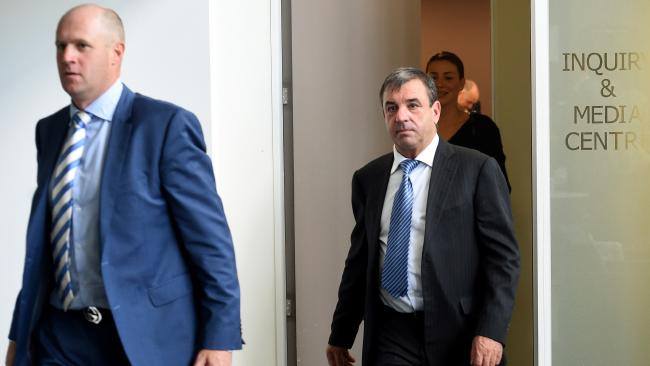
 With all of the kerfuffle about the Aquanita Case, and the pending appeals by the affected trainers, the cobalt issue seems to have taken a back seat. But – to assume that the cobalt problem will just quietly reach a conclusion would be unrealistic and simply stupid. There are still challenges to be played out, particularly in the cases of Danny O’Brien and Mark Kavanagh, but there are also other factors in play that should be concerning racing administrators but seem to be being ignored.
With all of the kerfuffle about the Aquanita Case, and the pending appeals by the affected trainers, the cobalt issue seems to have taken a back seat. But – to assume that the cobalt problem will just quietly reach a conclusion would be unrealistic and simply stupid. There are still challenges to be played out, particularly in the cases of Danny O’Brien and Mark Kavanagh, but there are also other factors in play that should be concerning racing administrators but seem to be being ignored.
One of the things that has to raise questions is the fact that there have been so many charges laid, particularly in Victoria. At the time of writing, there are, as best I can determine, no less than ten trainers dealing with unresolved cobalt charges in Victoria, at least three in New South Wales, and more in Queensland. Some of those charged have been in the training game for decades, and could not be considered to be “high profile” stables, by any stretch of the imagination. Interestingly enough, since the fracas around the charges on O’Brien and Kavanagh, both of whom could be reasonably called high profile at the time of the charges against them, there have been no allegations made by stewards against stables with similar status.
Now, racing isn’t any different to any other business. It does have its’ share of shonky operators, and there is certainly a percentage of “colourful racing identities” that could not be called the sharpest crayons in the box. Think about Fine Cotton and that’s obvious. But, if any trainer willingly dosed horses with cobalt after the publicity that the O’Brien and Kavanagh cases generated, then that trainer needs to be certified!
But there have been charges laid after all that publicity. I think all that is concerning.
Way back when dinosaurs roamed the Earth, I was a scientist, specifically an Organic Chemist, in fact. Organic Chemistry is the branch of Chemistry that deals with studying chemical compounds that contain carbon, and that almost always leads to studying life, and all of the chemical reactions related to life. One example is the way that cobalt works to change the organic functions and biochemistry of horses. When any logical look is taken at the overall cobalt issue in racing, it’s very difficult to avoid the conclusion that decisions about cobalt charges have been taken either by people with very little understanding of the chemistry involved, or by people with alternative axes on the grindstone, or under pretty questionable technical advice.
Basically, the fundamental issue that concerns authorities is that an elevation of cobalt level in the bloodstream of animals means a significant increase in the number of red blood cells and haemoglobin, and that means an increased ability to carry oxygen through the body, and a corresponding ability to maintain peak performance for longer.
But here are some of the considerations that seem to have been glossed over by the authorities.
Firstly, cobalt is a naturally occurring trace element that may normally be present in horses at low levels simply as a result of eating feeds that contain cobalt in trace amounts. Cobalt is also present in the structure of Vitamin B12. Secondly, when feed producers process natural feedstocks into proprietary feed products or supplements the chances of trace elements in the base feedstocks being present in the final product in a higher concentration than in the base feedstocks is not something that can be ignored. The production processes almost always run that risk. The problem is that there seems to be no requirement on feed producers to provide their customers with detailed chemical analyses of their products. If you check the packaging, or the available technical data sheets, the information provided to purchasers is usually pretty sketchy or generalised.
The problems that situation creates are threefold. In the first instance, in the absence of any knowledge about the possible cobalt content of any particular feed product, or supplement, how can a trainer be held responsible for an elevated cobalt reading, especially at the very low levels applicable to the racing rules? What is the trainer to do? Does the trainer have to run an analysis on each batch of feed or supplement he buys from a supplier? Surely, that’s just not reasonable.
But if the trainer doesn’t get an analysis done, and if the trainer can’t rely on a supplier’s analysis, what defence can the trainer have against a cobalt charge?
The next problem is the actual level of cobalt that activates the rules. It used to be 200 micrograms/litre as detected in the horse’s urine. That was halved in September 2016 to 100 micrograms/litre. Is that a reasonable thing? The literature on the matter is confusing at best.
But, in what seems to be unfortunately becoming a typical approach by the industry administrators, the Industry Notice advising of Revised Urine and New Plasma Thresholds for Cobalt that publicised the change also made it quite clear that managing the issue was entirely down to the trainers. No mention of any responsibility to be shouldered by the feed companies.
And that’s the rub. When the cobalt matters that are still to be finalised again reach the courts or the tribunals, all of these issues will need to be dealt with.
The question is – why haven’t they been dealt with before? The bushfires aren’t out yet, not by a long way.
By Rob Young
